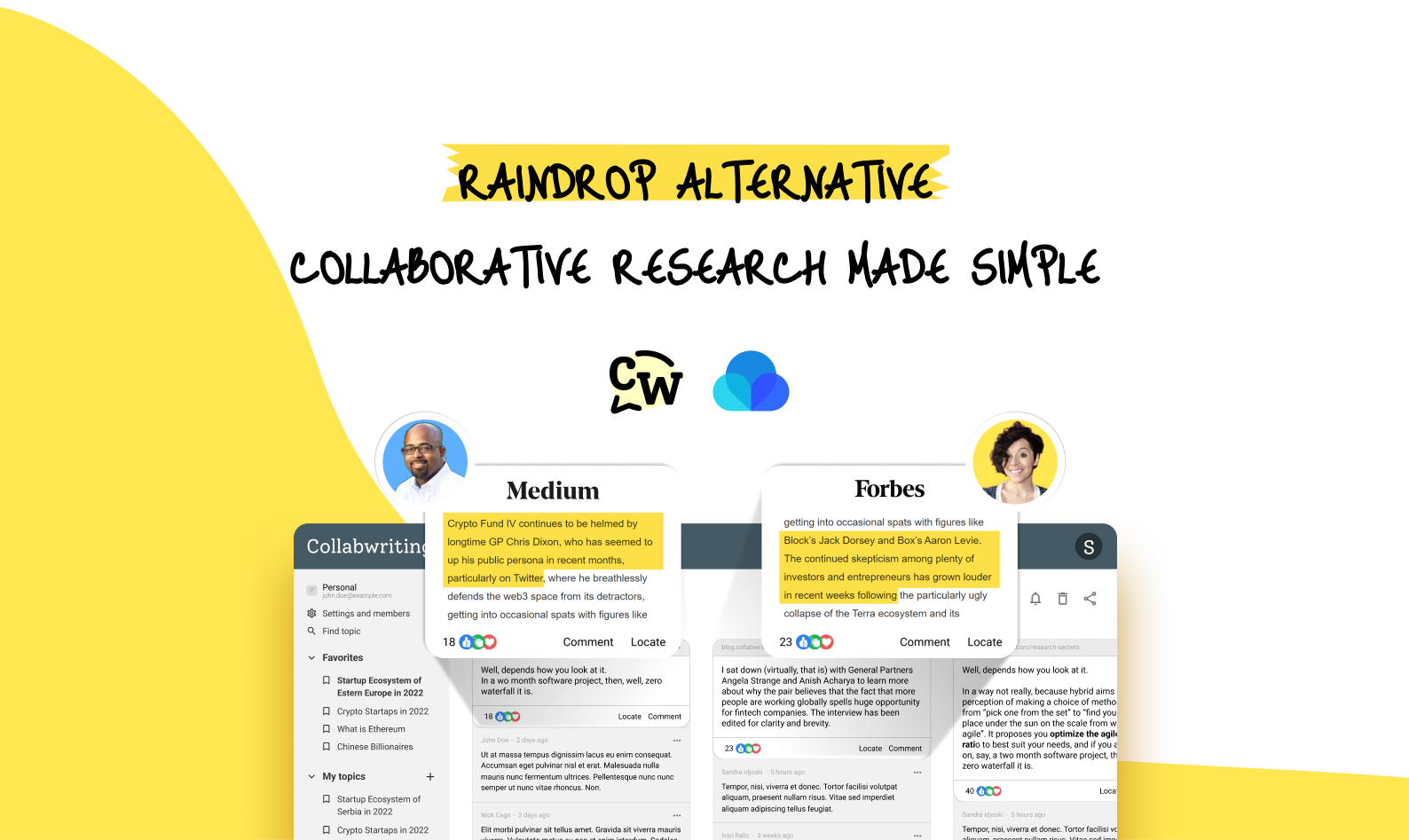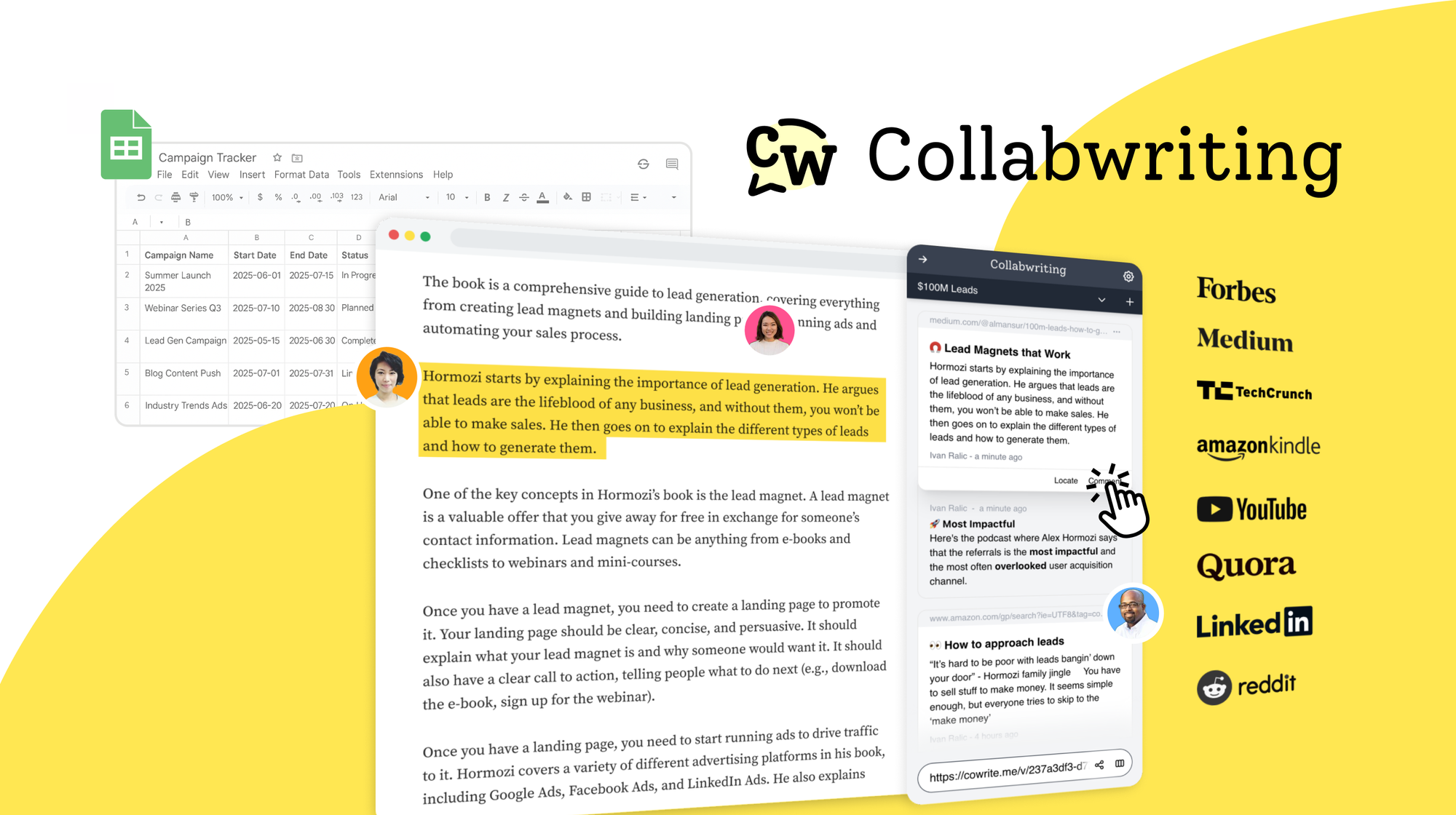When building a knowledge management strategy, understanding the different types of knowledge is key.
Terms like explicit, tacit, and implicit knowledge often appear in literature dating back to the 1990s, and knowing the differences can help you create a stronger, more productive team.
However, knowing about explicit knowledge is key as it’s a fundamental type of knowledge that you can easily capture and share to boost your team's performance.
3 Key Types of Knowledge - A Short Breakdown
While there are six types of knowledge, three are especially important for organizations:

1) Explicit Knowledge
Explicit knowledge, also called expressible knowledge, refers to information that can be written down, stored, and shared.
It can be easily shared with customers or employees within an organization.
Examples include:
- How-to guides and manuals
- Onboarding materials and employee handbooks
- Marketing research reports and financial statements
- Customer feedback and guidelines for content creation
This type of knowledge is easy to store in a knowledge base and share with employees, helping your team make faster, smarter decisions.
For instance, a market research report that outlines trends, consumer behavior, and competitive analysis that can help you spot new opportunities is a great example of explicit knowledge.
2) Implicit Knowledge
Implicit knowledge is putting explicit knowledge into practice. You probably see it happening in your organization all the time.
For instance, when a colleague explains different ways to complete a task, they’re sharing practical know-how gained from experience.
Also, think about skills and tricks that people pick up and can use in different jobs - that's another form of implicit knowledge.
3) Tacit Knowledge
Tacit knowledge comes from personal experience and is often hard to put into words.
Think of learning a craft or navigating tricky customer situations: employees know what works, but it’s difficult to fully document.
Capturing tacit knowledge requires mentoring, observation, and collaborative learning.
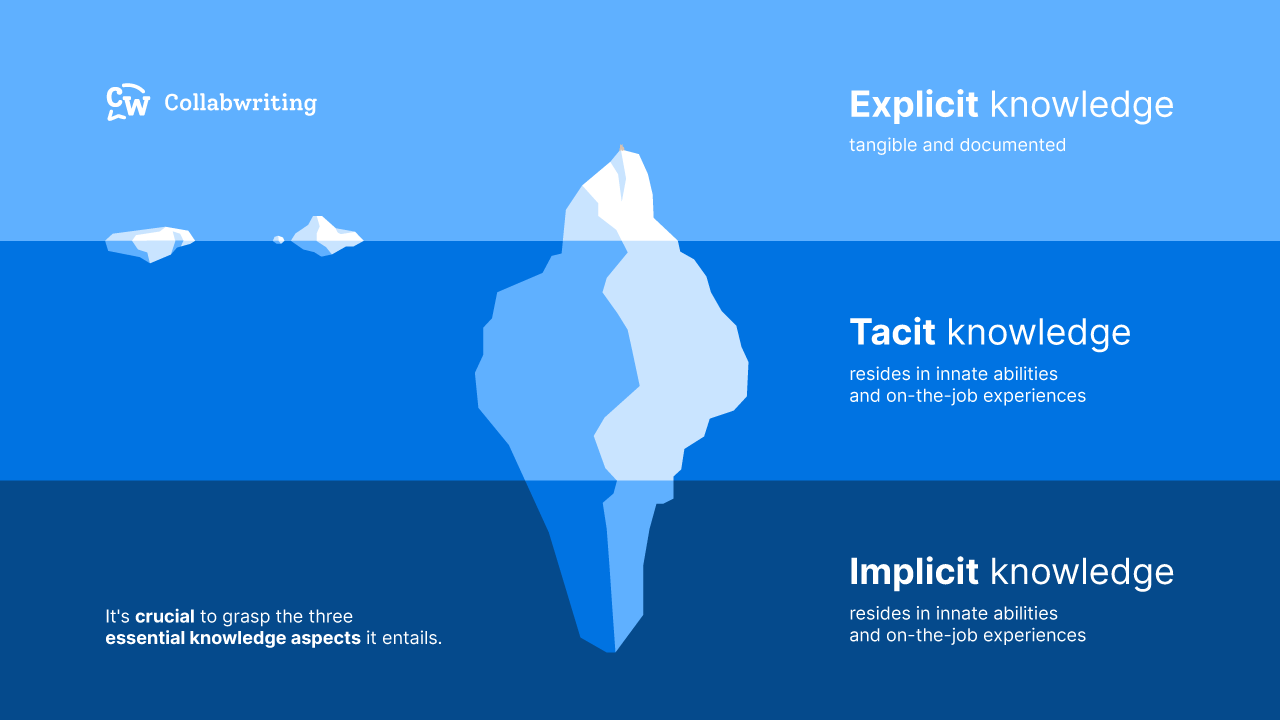
Why Explicit Knowledge Matters - The Benefits
You might be asking why it's necessary to document and share explicit knowledge. Well, here are a couple of important reasons:
Empower your team with an internal knowledge base
Building an internal knowledge base filled with information about your organization, products, and services, and making it easily available to your employees, can benefit your business in numerous ways.
New hires can quickly grasp your company's operations and responsibilities while existing staff can improve their expertise and abilities.
Having internal documentation makes it easier to understand the current status of your company, including ongoing projects. Plus, it allows employees to access any information or resources they need to provide efficient service and make quick, smart decisions for the organization.
When employees can access a company's documented explicit knowledge, like customer data or industry reports, it helps them solve problems or make decisions in their work more confidently and efficiently.
Moreover, this saves time for both parties.
American workers waste 5.3 hours weekly searching for or recreating existing information.
Improves communication & customer service
Documenting explicit knowledge makes communication smoother among employees. It ensures everyone is on the same page, which helps provide better customer service.
With easy access to information, the support team can assist buyers more efficiently without always needing senior guidance. This means they can explain things clearly and get things done faster.
Avoid mistakes and improve reliability
By documenting your policies and procedures as explicit knowledge, you help your team avoid mistakes and ensure clear communication. Employees can refer to the documentation when completing tasks or assisting customers, ensuring they follow the correct procedures and do their work accurately.
Effortlessly track progress and avoid duplicates
By organizing explicit knowledge in your company's branded knowledge base, you can effectively track the progress of various projects and tasks. This ensures that solutions achieved within the organization are documented and easily accessible for future reference.
Employees can benefit from learning from past successes rather than starting from scratch every time. This not only saves time but also avoids duplicating tasks within your team.
Prevent knowledge loss
You can protect your company from significant knowledge loss by storing explicit knowledge.
How does it work?
When a key team member leaves, they might take critical knowledge with them, leaving a gap. But if you have that knowledge documented, you prevent this gap and ensure no one can replicate it using other methods.
Better product development and procedures
One of the key benefits of explicit knowledge is its ability to create standardized methods and procedures, enabling your organization to achieve outstanding results.
By establishing a system to capture, store, organize, and share your company's collective knowledge, you can generate new ideas, leading to exponential business growth over time.
Explicit Knowledge - Examples
- How-to guides and manuals
- Onboarding materials
- Employee handbooks
- Guidelines for content creation
- Marketing research reports
- Customer feedback
- Financial statements
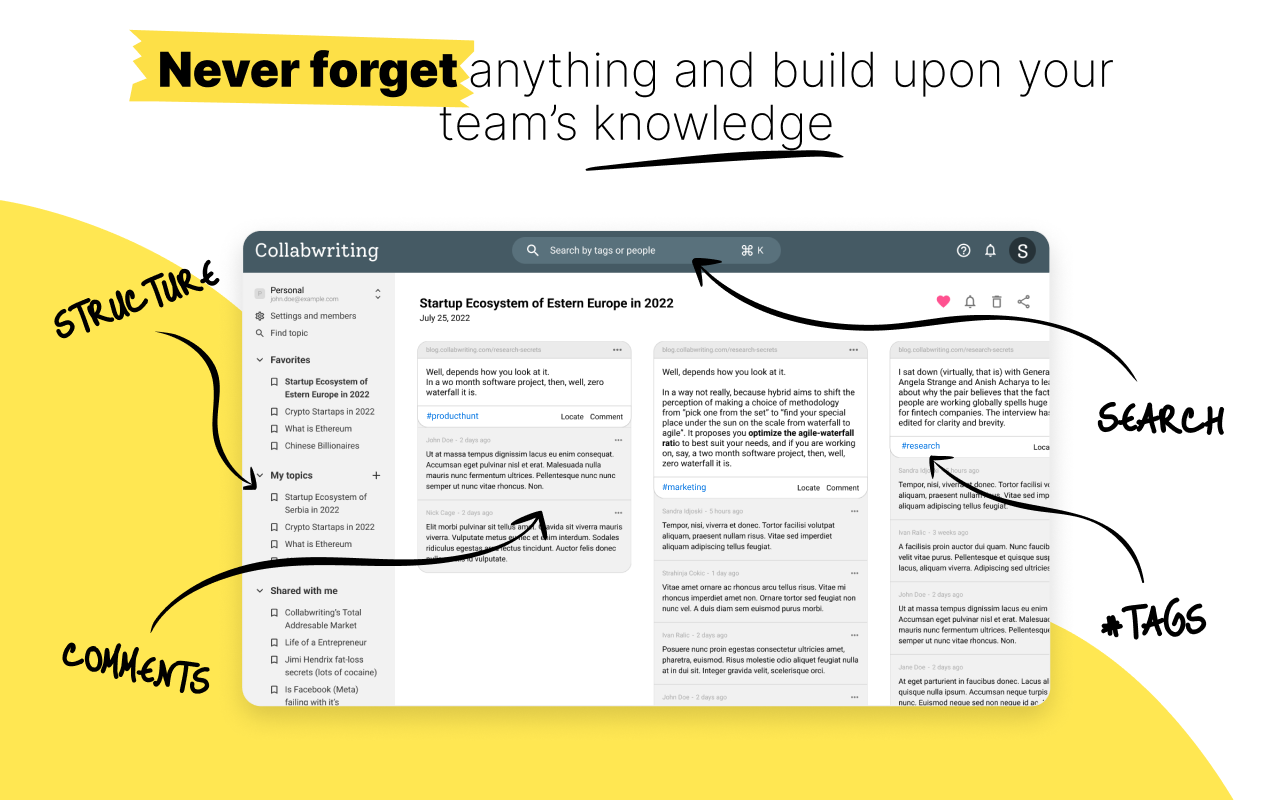
Collabwriting - Shareable Notes on Web Pages and PDFs
Collabwriting allows you to gather all your online sources in one place. Just highlight, save, and collaborate with anyone on any content you find online.
How to Capture, Store, and Share Explicit Knowledge
Capturing, storing, and sharing explicit knowledge can be beneficial for your company's growth. There are several good reasons to do it.
Let's explore how you can make it happen:
Capture Knowledge
- Find what's important to know in your organization
- Try different ways, such as writing documents, making manuals, or using tools like Collabwriting to capture this knowledge
- Motivate employees to share what they know through written guides, videos, or training sessions
Identify knowledge gaps by asking employees and checking customer feedback. Also, consider how well teams perform and if they need more information.
Store Knowledge
- Choose a centralized place or platform to store knowledge
- Organize knowledge in a structured way so it's easy to find
- Keep track of changes and updates over time
- Make sure your knowledge is up-to-date
Share Knowledge
- Foster a culture of knowledge sharing within your organization
- Ensure easy access to stored knowledge through user-friendly platforms
- Encourage collaboration and feedback to improve and update shared knowledge continuously
Challenges in Knowledge Management and How to Overcome Them
Creating a good knowledge management system isn’t always easy.
Many companies face problems like employees not wanting to share what they know, old or messy information, and not having enough time to document everything properly.
People Not Sharing Knowledge
Sometimes, employees may be unsure about sharing their knowledge because they worry about losing their value or just aren’t used to working openly.
To fix this, it’s important to create a culture where sharing is encouraged and appreciated. Leaders should lead by example and offer rewards or recognition for those who share helpful information.
👉🏼 Encourage a culture of openness with recognition and incentives.
Too Much or Outdated/Messy Information
If knowledge bases aren’t kept up to date, they can get full of old or repeated information. This makes it harder to find the right info and can cause confusion.
To avoid this, set clear rules for updating content, assign people to take care of specific topics, and regularly review the information to keep it accurate and useful.
👉🏼 Assign responsibility for updates and review content regularly.
Not Enough Time or Resources
Writing down and organizing knowledge takes time, which can be hard to find.
To make it easier, try to include knowledge sharing in daily work instead of treating it like a separate task.
👉🏼 Integrate knowledge sharing into daily workflows and use tools like Collabwriting to simplify the process.
By knowing these challenges and working on them, your team can build a knowledge system that really helps everyone.
Summing Up
Capturing and improving your company’s explicit knowledge can be tough. It requires a solid plan, ongoing effort, and a reliable system for managing information.
But once you get it right, your organization can tap into its full potential and drive real growth. Your internal knowledge is what holds your company together, so it's crucial to make the most of it rather than letting it slip away.




![The Best Tool for Collaborative Research in Content Marketing Teams [2026]](/content/images/2025/12/image--5-.png)

![5 Tools Marketers Use to Organize Research - Compared [2026]](/content/images/2025/11/cover-4-1.png)

![Build Credibility in Research: Smart Way to Verify Information and Track Sources Easily [2025]](/content/images/2025/10/covers-for-blog--7--1.png)
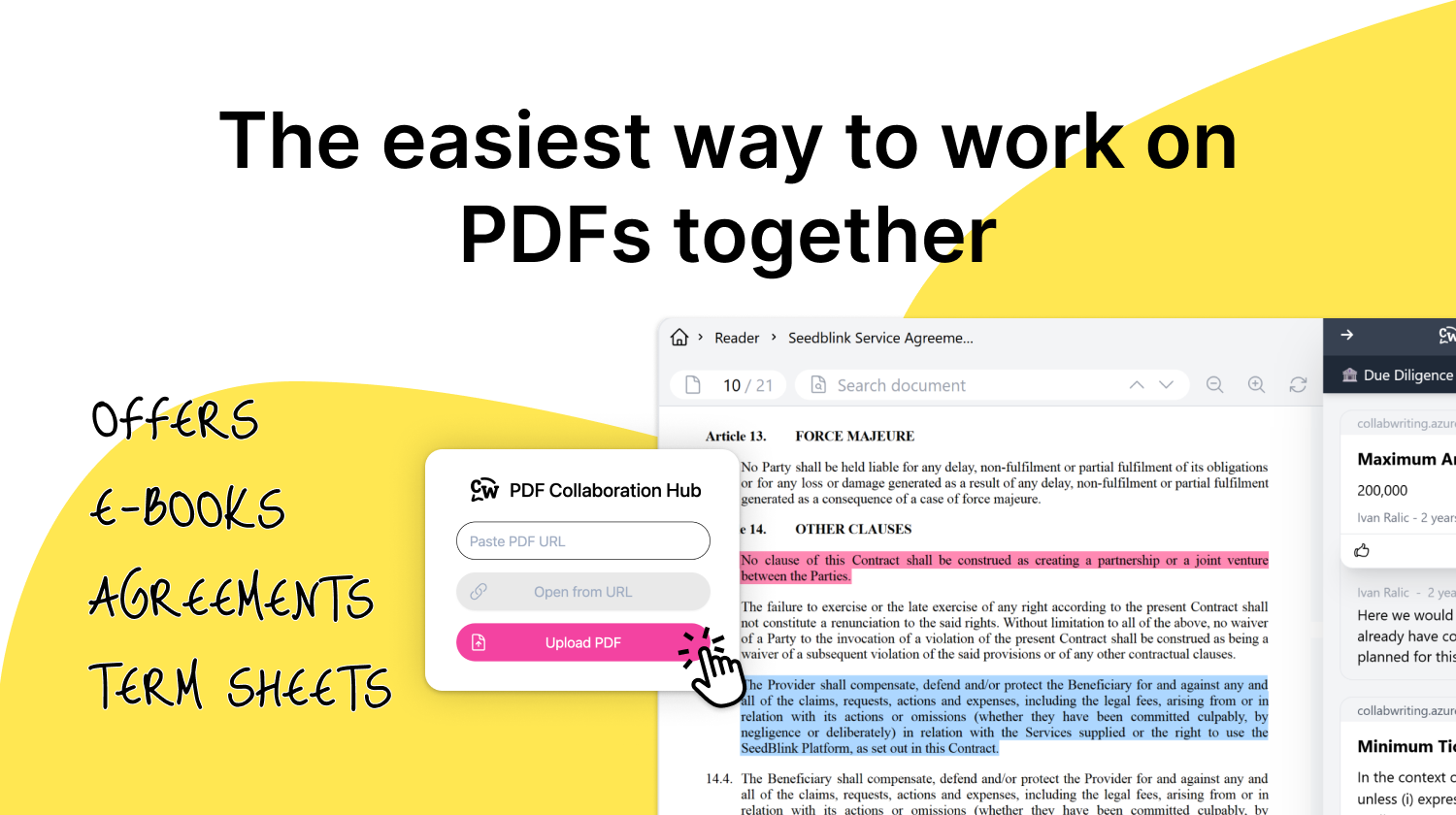
![How Marketers Can Turn LinkedIn Content into Collaborative Research [2025]](/content/images/2025/10/covers-for-blog--8-.png)
![Best Readwise Alternative for Personal & Team Research [2026]](/content/images/2025/09/Frame-814--3-.png)
